Bike Perfect Verdict
Light, well-supported damper and surprisingly stiff, well-sorted XC, marathon, and light downcountry fork from the Swiss wheel specialists.
Pros
- +
Very plush and smooth straight from the box
- +
Lightweight chassis shows race intentions
- +
Surprisingly stiff for 32mm stanchions
- +
Supportive damping
- +
Spring curve works well with damper
Cons
- -
Not ideally suited to heavier riders
- -
Not possible to change travel easily
Why trust BikePerfect
The DT Swiss F232 is a common sight at the front of the UCI XCO World Cup, piloted to multiple victories by the Thömus team, but despite being one of the best XC forks, it's still a rare sight out on the trails. It has been around for a while now and was featured in our A to Z of MTB suspension, so we were keen to see how it performed away from the race track.
DT is no stranger to the race track, with none other than Nino Schurter riding previous generations of race suspension from the brand and current World Cup racers Alessandra Keller and Mathias Fluckiger now pushing the forks to their limits between the tapes. However, race wins don't always mean much out on your local trails. After all, the requirements of a highly-tuned athlete with full race support are often vastly different from the rest of us, but our recent review of the F535 One fork meant we had high hopes for its skinnier racing sibling.
XC racing was once upon a time more like a long cyclocross race, but in recent years the tracks have become increasingly technical and evolved into a true test of skill and endurance. This, in turn, has meant the bikes ridden have become more like trail bikes with slacker angles, longer travel and bigger tires. The F232 was launched alongside a super-light dropper post and was one of the first to go with 120mm travel and proper clearance for 2.4 tires whilst being very light, but does it still cut the mustard out on the trail?
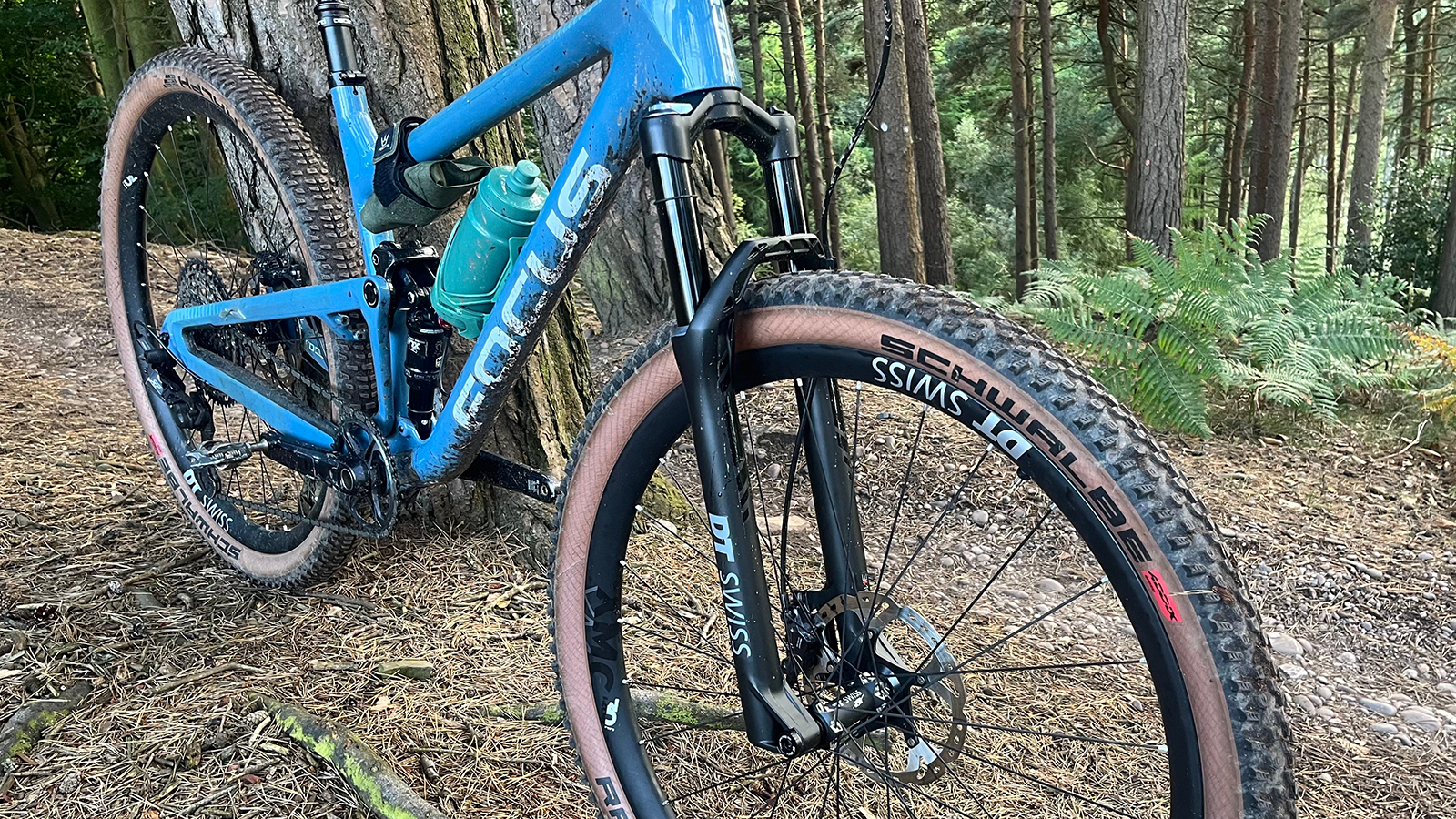
Design and specification
The 32mm stanchioned fork is available in three travel variants, 100, 110, and 120mm fixed travel options in a de rigeur for XC 29er size with 44 and 51mm offsets available in the two shorter versions and just the 44mm in the 120mm travel version we tested. They look skinny compared to the latest RockShox SID in 35mm or the Fox 34, but DT says its materials analysis test data shows it has left material in the right places to give the chassis excellent torsional rigidity and resistance to bending, which should mean less binding from the bushings when the going gets rough.
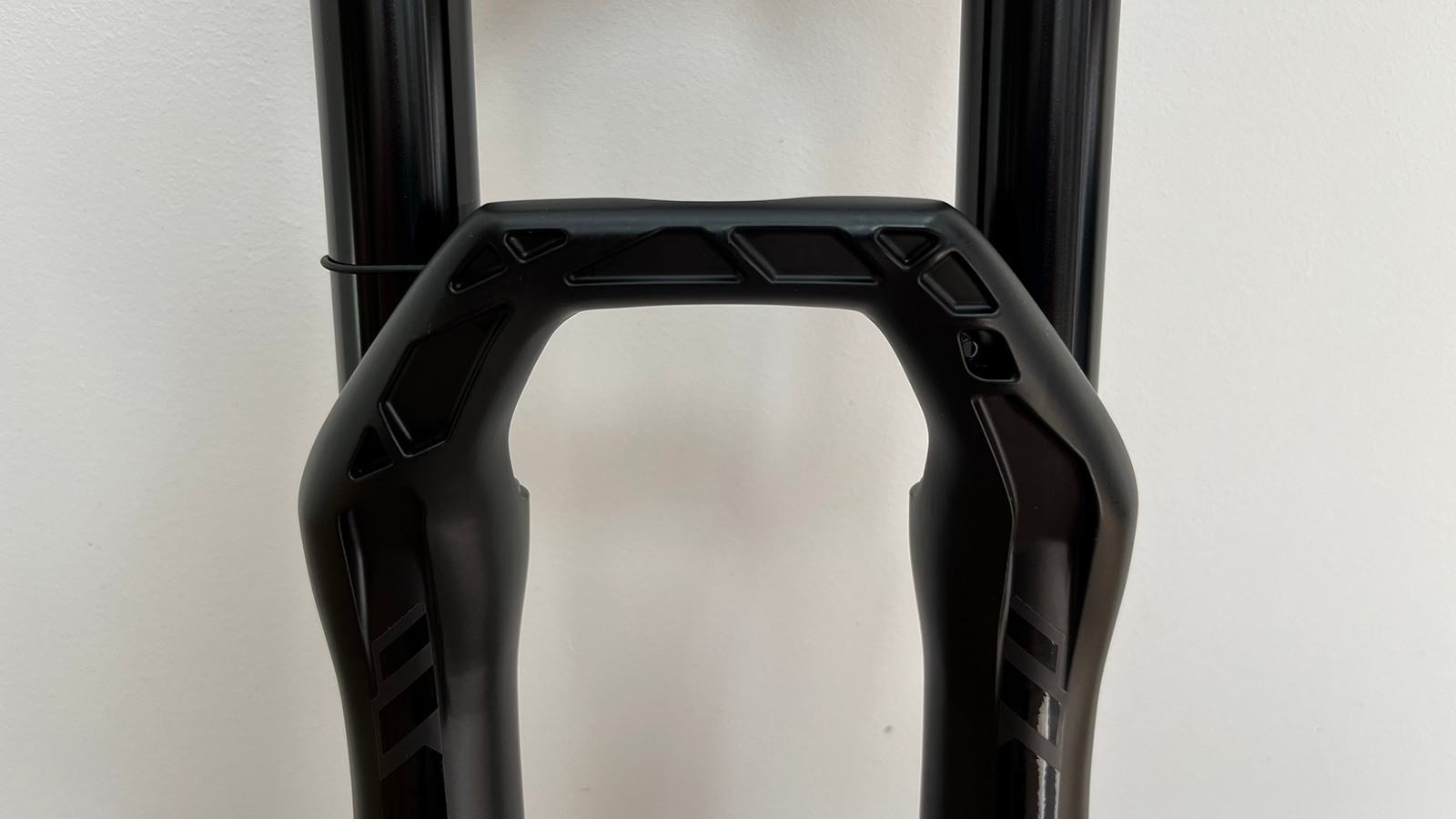
It's pretty obvious when you first see the fork that saving weight was high on the list of features for the designers, with lots of cutaways and intricate casting on the fork to remove as much material as possible, resulting in a respectably low weight of (tested) 1,566g. The fork has an angular industrial aesthetic like its bigger brother, the F535, with its wide crown giving plenty of clearance for up to 2.4” tires. There's no quick-release option as standard, the 6mm Allen key thru axle is much lighter, but DT’s neat QR15mm can be fitted aftermarket if easy wheel removal is more important to you.
The fork uses a fairly standard dual air chamber, with a bypass at an earlier point in the travel than usual, which ensures the air pressure in the negative chamber is higher than the positive when fully extended, therefore reducing the initial breakaway force. This is a clever way to combat the often high stiction associated with a traditional air system and should mean a supple start to the suspension and plenty of grip. The spring curve is designed to be as linear as possible, with a flat section in its midsection developed by DT with its sponsored athletes to help maintain momentum on the trail. DT uses a volume spacer setup, like most brands, and to enable you to fine-tune this, they come with two already in place, and you can add a further one should you wish.
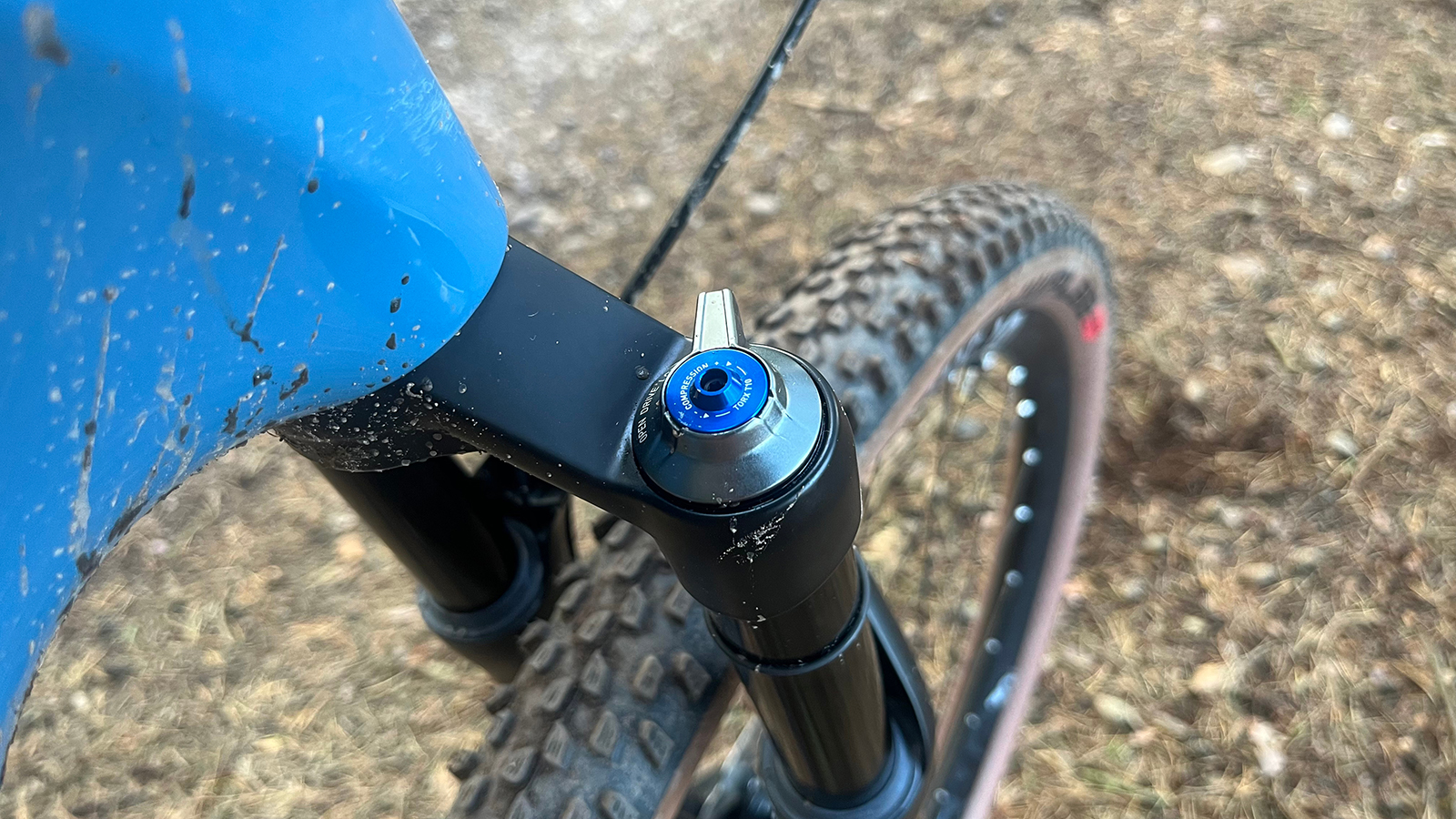
There's no position-sensitive damper like you'd find on the F535 here. Instead, it uses a more standard affair, dubbed In-Control, to keep the weight as low as possible. It has a three-position dial at the top of the fork that gives you open, drive, and lock modes. Compression damping can be adjusted using a T10 torx key, but this only makes a difference in the open mode. In drive mode the oil flow is restricted through the damper and stiffens up the fork accordingly, which is ideal on technical climbs but has a blow-off valve to protect the fork from big impacts. The lock is a full lockout, like most top-tier race forks. The rebound damping is externally adjustable, using the red dial at the bottom of the right-hand leg, and offers 30 clicks of adjustment.
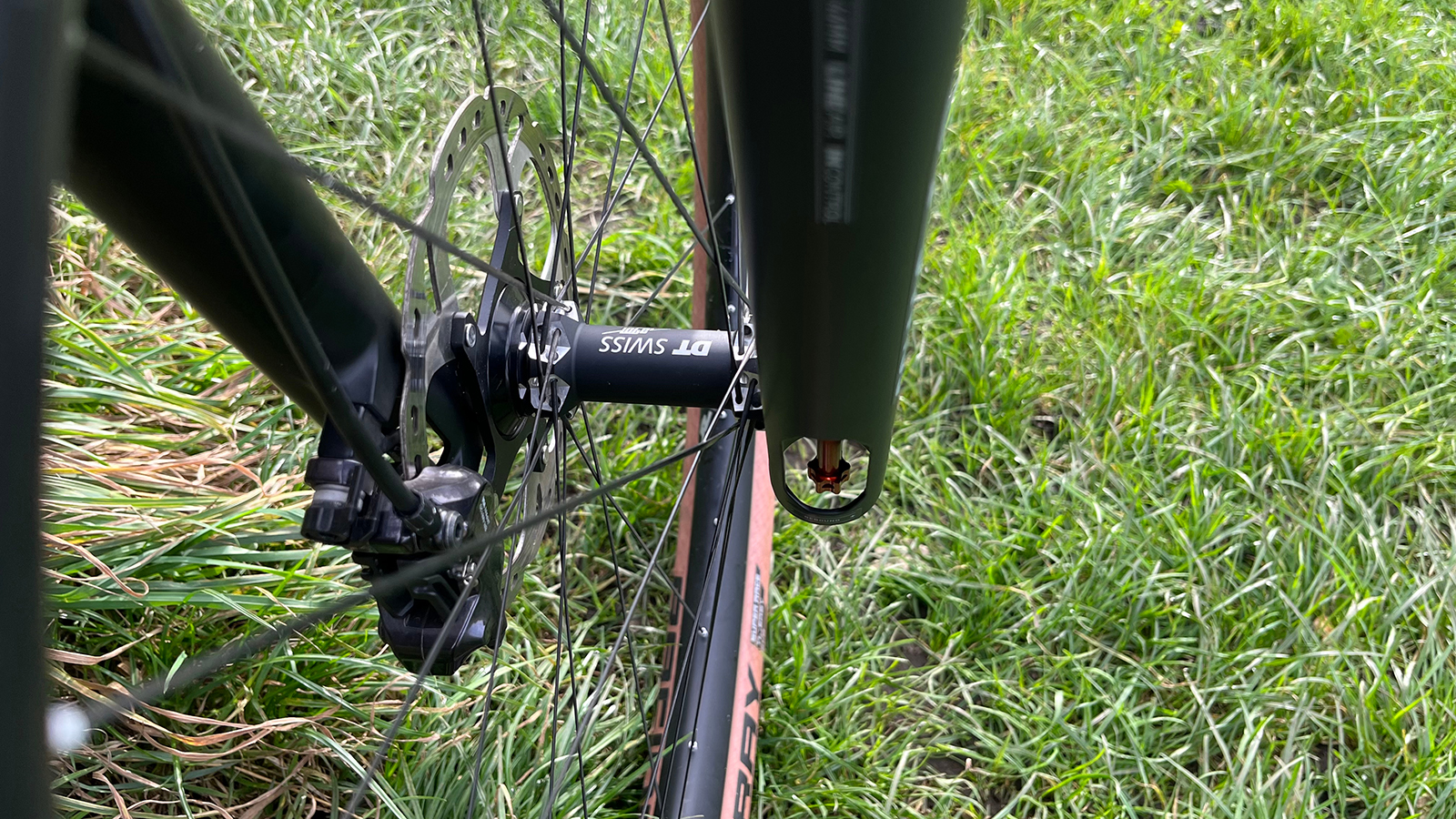
Performance
As with other DT suspension, there isn't a settings guide on the fork. Instead, you have to use their app or website. I'm not normally a fan of apps for settings as you can't always get a signal out on the trail, but the level of detail and accuracy of the suggested settings from DT should be applauded, as I've rarely had to detour far from the settings suggested. Setup is easy. Simply input the fork model and your weight, and it will give you the pressure and amount of rebound and compression damping needed. 88.5 psi and 20 clicks of rebound and five turns of the compression dial in my case. As was the case with the F535, the recommended settings were very close to what I ended up with, and although I like to fiddle with suspension settings, getting them right from the outset is a big bonus.
Its low weight was immediately noticeable compared to the Fox 34 it replaced, but it looked considerably skinnier, and I was concerned it may have been a bit of a wet noodle on my local rocky trail loop I use to test suspension. Luckily, DT’s clever use of material analysis has paid off. It wasn't stiffer than the Fox but was certainly very close, with very little deflection or twisting on technical descents, which I was surprised by, given its lightweight appearance. My test loop has plenty of rock garden sections that ping the front wheel in multiple directions and really shows up any flaws in a fork chassis pretty quickly.
The performance out of the box was exceptional. I've previous experience with suspension tuning, and often the suspension a pro races on feels far smoother and supple than a standard unit straight from the box, but not so here. The starting stroke is smooth, showing good bushing design, high-quality parts, and lubrication. With barely any stiction, the air spring ramps up nicely and doesn't dive much when pushed in corners or rolling sections of terrain.
In open mode, it is a very plush fork with a very responsive beginning stroke offering surprising amounts of traction, even with faster race rubber fitted. At 120mm with 32mm stanchions it's right at the upper end travel wise; if you need more then I'd go for something with a larger chassis. As with many aspects of mountain biking the phrase downcountry is open to interpretation and I'd say the F232 feels great on terrain up to red and black UK trail center levels, but those into steeps and off piste trails should look elsewhere.
I like the drive mode as an idea, but if I'm honest, I rarely used it as the damping in fully open mode was up to the task of keeping the fork controlled and in shape – a sign of a well-sorted damper and spring partnership. Lockout gives a super solid lockout, not just a ramp-up of compression damping, which is ideal given its racing intentions. I tested the standard version, but a remote lockout is also available.
Reliability was as we have come to expect from DT Swiss. It's been perfect since the first ride with no pressure loss, damper changes, or wear to any seals, and there was no real bed-in period needed either. The fork felt great when I fitted it with only normal setup tweaks to get it how I wanted it to feel, which is surprisingly rare. Suggested service intervals are also very long at 200 hours, which goes to show the confidence DT has in the quality of the seals and internals; most forks are in the 50-100 hour service bracket.
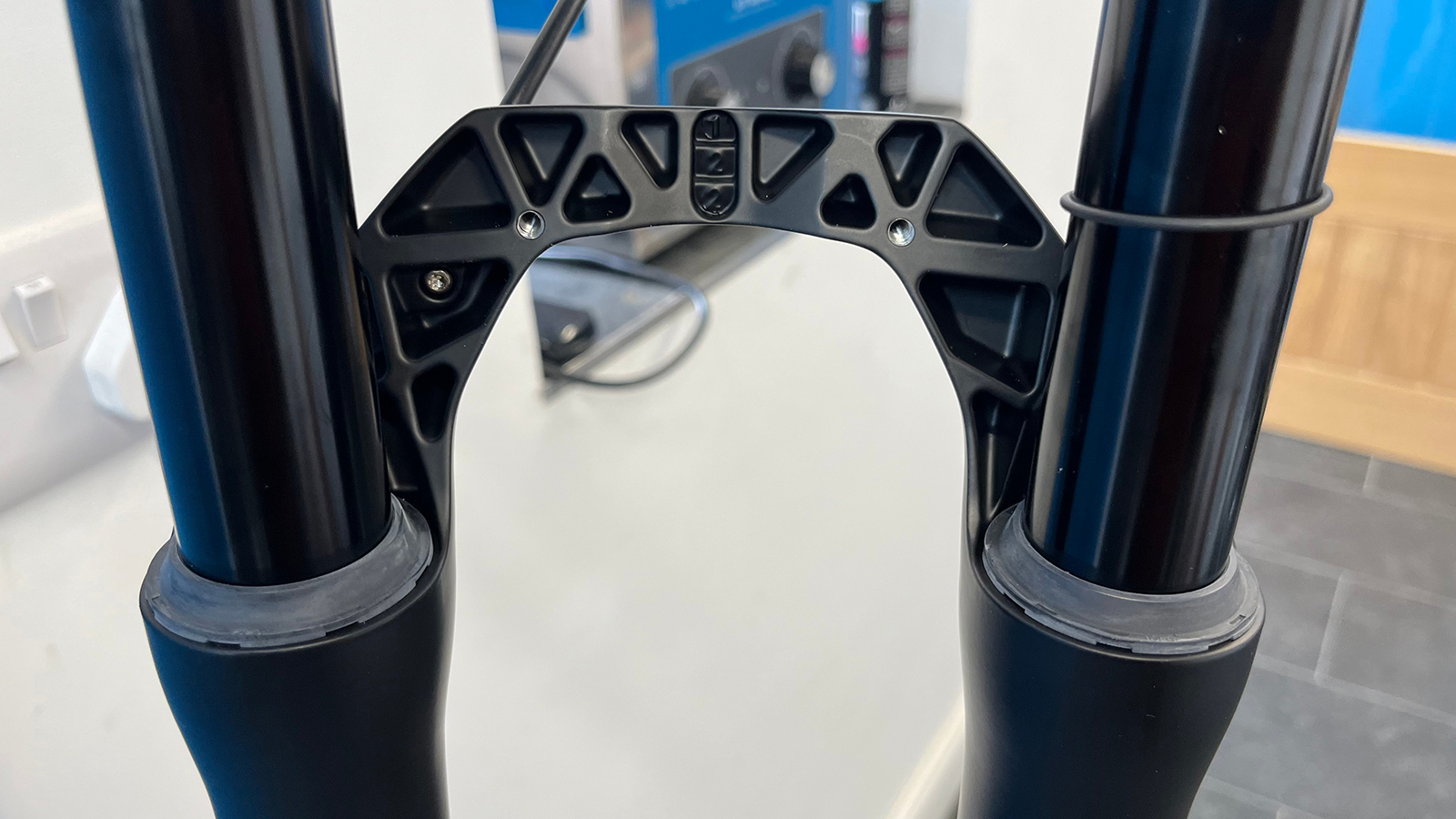
Verdict
The F232 One is a great XC fork, and in the 120mm setting, it worked well as a light downcountry or marathon fork. It's stiffer and more accomplished than the skinny, aggressively cut-away looks combined with 32mm stanchions would have you think too. The damping and spring curve work well together, providing a good mix of damper control and initial stroke suppleness that make for a grippy yet well-supported front end and would fit nicely on any of the latest 110mm race bikes from the likes of Scott, Cervelo and Santa Cruz.
For more information, check out DTswiss.com.
Tech specs: DT Swiss F232 One 120 fork
- Price: $979 / £924.99 / €979
- Wheel size: 29” only
- Travel: 100mm/110mm/120mm
- Stanchion diameter: 32mm
- Offset: 44mm as tested
- Weight: 1,566 grams
- Brake mount: Postmount 7”
- Colors: Matt black

Neal has been riding bikes of all persuasions for over 20 years and has had a go at racing most of them to a pretty average level across the board. From town center criteriums to the Megavalanche and pretty much everything in between. Neal has worked in the bicycle industry his entire working life, from starting out as a Saturday lad at the local bike shop to working for global brands in a variety of roles; he has built an in-depth knowledge and love of all things tech. Based in Sheffield, UK, he can be found riding the incredible local trails on a wide variety of bikes whenever he can

